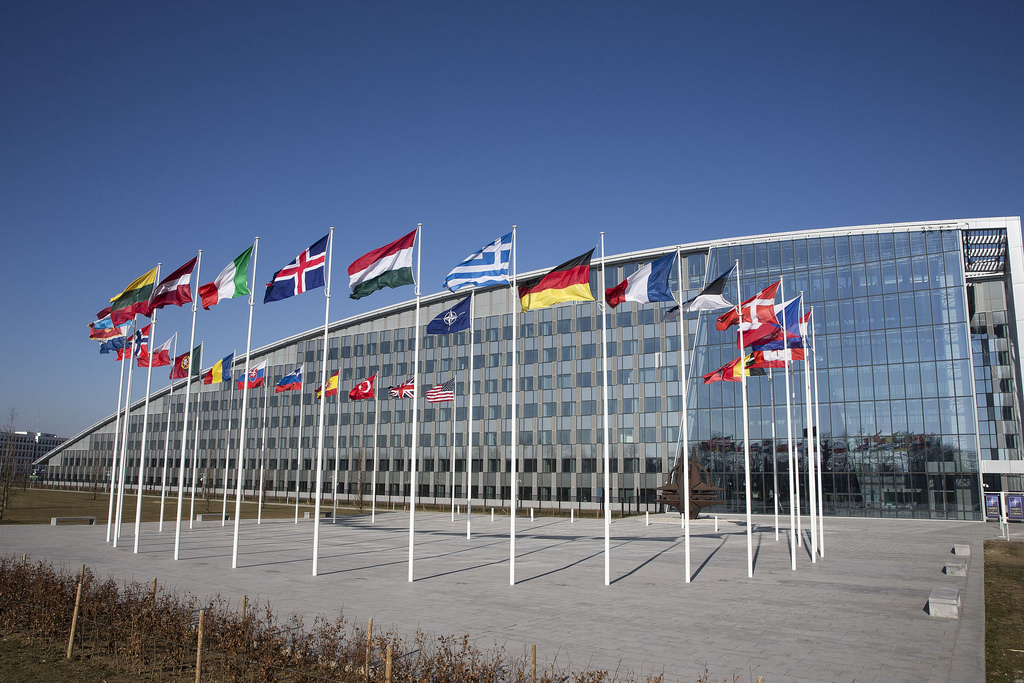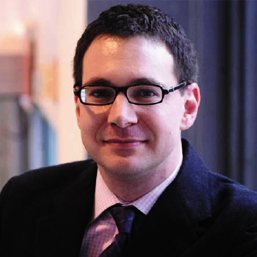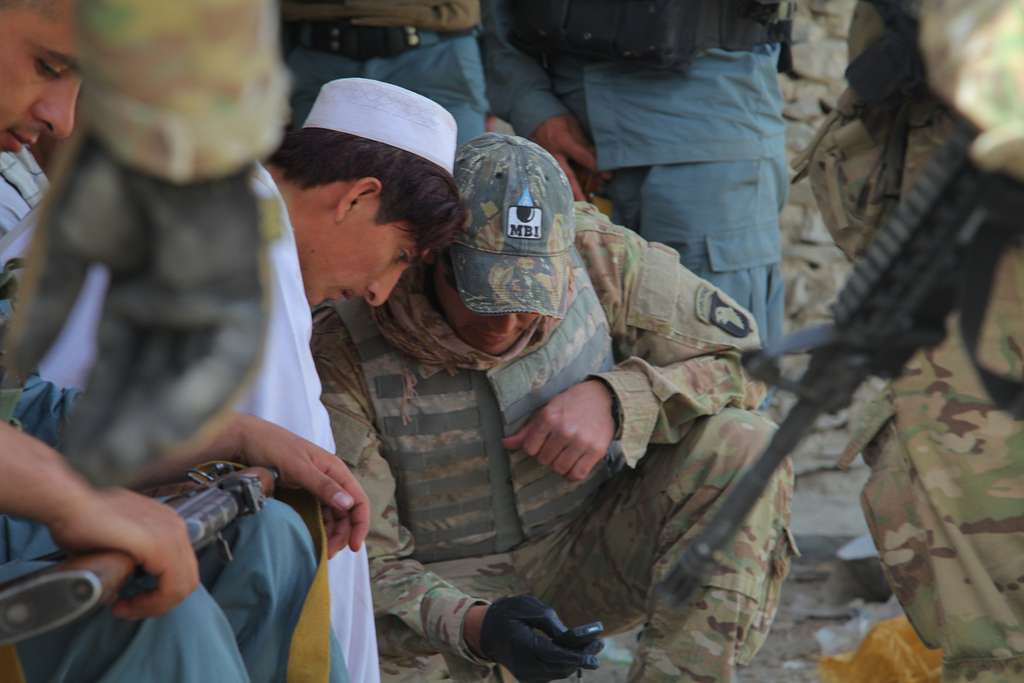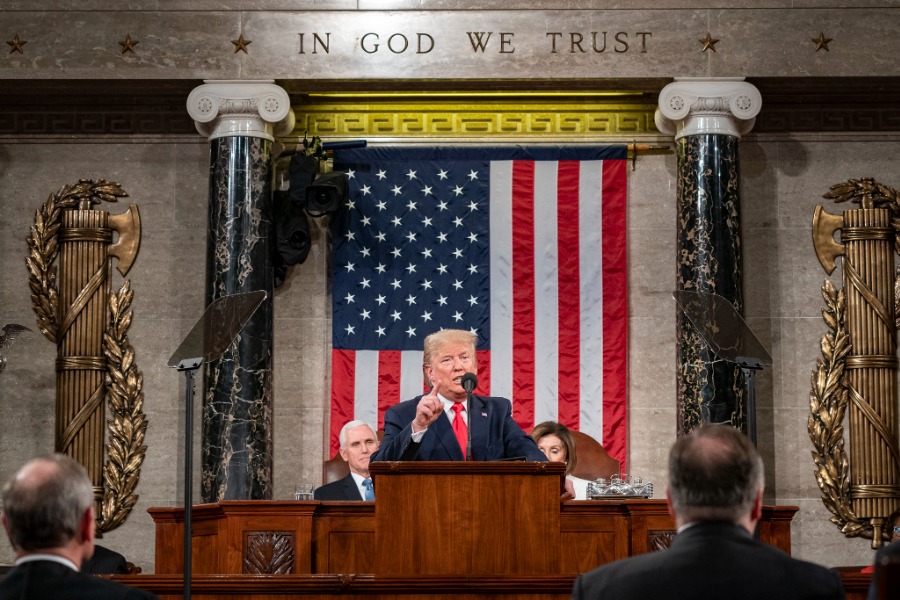NATO and War Powers: Remembering the ‘Great Debate’ of the 1950s
As President Trump goes into this week’s NATO summit complaining about burden-sharing, amid inflamed anxieties at home about presidential powers over foreign relations, it is worth remembering the “Great Debate” of the early 1950s. That dispute pitted President Harry Truman and Secretary of State Dean Acheson against congressional NATO skeptics, and it concerned whether the president could unilaterally deploy four additional U.S. Army divisions to Western Europe.

Published by The Lawfare Institute
in Cooperation With

As President Trump goes into this week’s NATO summit complaining about burden-sharing, amid inflamed anxieties at home about presidential powers over foreign relations, it is worth remembering the “Great Debate” of the early 1950s. That dispute pitted President Harry Truman and Secretary of State Dean Acheson against congressional NATO skeptics, and it concerned whether the president could unilaterally deploy four additional U.S. Army divisions to Western Europe. In the end, Truman went ahead with the deployment, while the Senate merely passed a non-binding resolution stating that congressional authorization would be required for additional deployments. The event firmly established, in practice, the president’s momentous constitutional authority to place, or presumably to not place or to withdraw, large numbers of troops abroad in defense of allies—a set of presidential war and peace powers largely taken for granted today.
The Truman administration is best known for two other major war-powers incidents in that period: the Korean War intervention absent congressional authorization and the seizure of steel mills during the conflict. Halfway around the world in Europe, though, that administration was bending war powers to shifting strategic context in other important ways.
Only a year after NATO formed in 1949, the Truman administration sought to dramatically increase standing U.S. troop levels in Western Europe, along with other improvements to the defense alliance such as appointing an American officer as supreme allied commander. Truman famously called the alliance “a shield against aggression.” The administration and other NATO leaders saw the additional troops as necessary to shore up the credibility of U.S. commitments to Europe’s badly-depleted defense against the Soviet bloc, especially after the Soviet Union’s development of nuclear weapons and the recent shock of North Korea’s brazen attack on the South. Some prominent Republican legislators objected, however, concerned that the United States would bear too much of the cost of allies’ defense. Led by Sen. Robert A. Taft, these skeptics included some who clung to prewar isolationist tendencies, others who wanted to preserve American freedom of action abroad, and still others who were focused on extracting bigger defense commitments from European allies.
Though partly a debate about strategy and cost, this was also a significant constitutional dispute. Truman argued that a decision to station an additional 100,000 troops in Europe was an exercise of his core commander-in-chief powers to deploy existing forces where he saw fit. In other words, deciding where to place Army and Navy units was a quintessentially presidential act. Opponents in Congress argued that Truman was usurping Congress’s role in shaping U.S. military policy, especially with respect to war. To them, Truman was pre-committing the United States to fighting the next European war by putting large numbers of U.S. forces on the front lines in advance. This hijacked Congress’s prerogative to make that decision for the United States should circumstances arise. In a short 1951 book, “A Foreign Policy for Americans,” Taft objected to sending troops under the Atlantic Pact “as a part of a defensive operation against Russia without previous authority from Congress … because the fact that these countries are threatened by an actual attack is the very justification and reason for sending the troops.”
The strategic and constitutional debates were entwined. Discussions a year earlier between the executive branch and the Senate over ratifying the North Atlantic Treaty had included the separate legal issue of whether or not its collective self-defense provision, Article 5, contemplated congressional approval before U.S. intervention on behalf of treaty allies. Truman’s proposed force deployments, Taft and some colleagues now argued, rendered the answer to that question irrelevant, because a Soviet attack on Western Europe would hit or threaten U.S. forces stationed there and therefore automatically draw the United States into war. Yet that was precisely the strategic point for the Truman administration. Using U.S. troops as a tripwire to bind the United States in advance to Europe’s defense would, the logic went, make war far less likely; this was a presidential move to prevent war, not to start one.
Like the military-intervention issue in Korea, Truman and his key adviser, Acheson, thought the global Cold War menace made it essential to establish presidential prerogative on major troop deployments abroad. In 1951, they won the point in practice, as congressional opponents lacked the political strength to effectively push back beyond symbolic measures, and Truman sent the Army divisions.
This episode is particularly interesting because it involved a constitutional controversy that no constitutional drafter or ratifier would have seriously contemplated. For the founding generation, strategic dogma included an aversion to “entangling alliances” in the first place, and there was a serious debate about whether to have much of a standing army at all, let alone to station parts of it abroad. No constitutional framer would have seriously thought, one way or the other, about whether the president could do what Truman proposed for NATO, even on a smaller scale.
Post-World War II strategic thinking turned some original dogma on its head, however, raising new constitutional questions. Instead of seeing alliances as a trap for drawing the United States needlessly into foreign wars, most postwar strategists saw a network of alliances (not just NATO but also a series of bilateral and regional pacts in Asia) as necessary to keep the United States out of wars. At the same time, the United States shifted from its traditional pattern of postwar military demobilization to a state of permanent military readiness. Defense policy became more about deterring wars than fighting them.
It is well known that Cold War alliances and a massive standing arsenal contributed to expansive assertions of presidential power to engage in military hostilities. Those powers continue to be debated, especially in the Trump era. Meanwhile, though, the “Great Debate” episode of the early 1950s is a reminder of other accompanying powers of war and peace—powers over troop deployments, for instance, as well as powers to engage in joint exercises (that could be viewed alternately as defensive or provocative)—that were once constitutionally controversial but today are, legally speaking, taken for granted.




.jpg?sfvrsn=6cdd11de_5)
